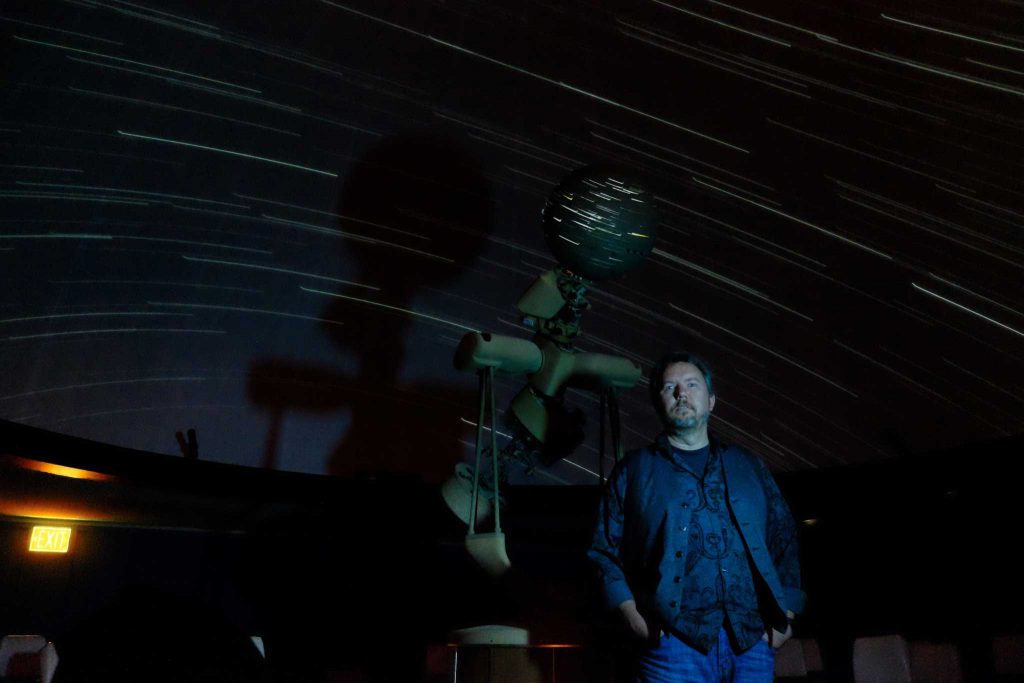Stephen Kane, a physics and astronomy professor at SF State, and his team have discovered and constructed a thermal image map of a new planet, named 55 Cancri. The new planet is the first of its kind to be discovered and draws striking similarities to Earth.
55 Cancri is a terrestrial planet, which means it has a rocky surface, and is slightly bigger than Earth. No other planet like that exists in our solar system. The new planet, not in our solar system, makes a complete rotation around its sun in 18 hours. As the planet circles swiftly around its sun, it does not tilt on an axis the way Earth does.
“It doesn’t actually rotate when it is going around the star,” Kane said. “It’s so close to its star that it’s tidally locked in the same way the moon is tidally locked to the Earth.”
Because 55 Cancri doesn’t spin as it orbits its sun, only one side of the planet is exposed at all times to the direct heat of its star. This makes one side of the planet significantly hotter than the other, even though the entire planet is more than 1,000 degrees Celsius.
NASA helped with the development of the animation used to represent the planet once Kane and his team created the thermal map. Once the imaging of the planet was complete studies of the composition revealed what the terrestrial planet had on its surface.
“The temperature difference (in the imaging) is actually a result of lava,” Kane said.
The thermal mapping of 55 Cancri also revealed that the planet at one time had an atmosphere. However the orbit of the star has since depleted it.
“Its atmosphere has literally been stripped away from it by the intense amount of energy it receives from its star,” Kane said. “The atmosphere has just been blown away.”
Patrizah Amil, an SF State microbiology major, was interested in the parallels between 55 Cancri and Earth, and the potential state of our atmosphere.
“I think it was really cool that Professor Kane was able to find and map a planet through thermal imaging,” Amil said. “Especially seeing how that can pertain to the planets that already exist, maybe we are headed in the same direction.”
Since there aren’t any other planets like this in our solar system, astronomers know little about terrestrial planets that are slightly bigger than Earth. The next planet that is larger than Earth is Neptune, and it’s a gaseous planet. The studying of 55 Cancri can help understand more about the universe.
“These kinds of planets are a big big mystery to us,” Kane said. “So it will tell us a lot about something for which we don’t have any analog in our own solar system. It tells us what happens if you move a planet very very close to the star that it’s orbiting.”
Students at SF State are excited to hear about the new planet and elated to hear that a professor from campus was a part of the discovery.
“I think that this is amazing, personally,” said Jordan Beaston, a microbiology major. “And I think it’s super cool that somebody on our faculty was involved.”
The discovery and imaging of this planet is a culmination of effort five years in the making. Analysis of the cause and effects of the atmosphere on 55 Cancri will aid in the understanding of the Earth’s atmosphere. According to Kane, since it has already lost its atmosphere and is evaporating, the planet will either be eroded or broken apart.
Watch a visualization of the atmosphere surrounding 55 Cancri here.







Alan Pro • Apr 13, 2016 at 2:36 am
Very nice article. I have used my Therm-App to try and view as well.